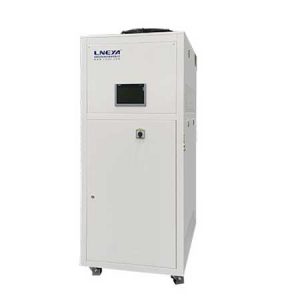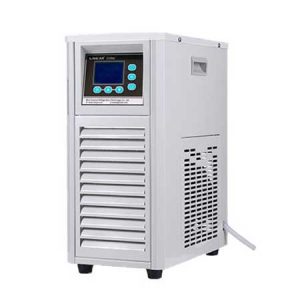heater lab
Heater Lab: Complete Guide to Laboratory Heating Systems
- Fundamentals of Laboratory Heating
Laboratory heating systems serve critical functions in scientific research by providing controlled thermal environments for various processes:
Basic Principles:

Heat transfer mechanisms (conduction, convection, radiation)
Temperature gradient management
Thermal stability requirements
Heat Measurement Parameters:
Temperature range (ambient to 1500°C+)
Heating rate control (ramp/soak programming)
Uniformity across working surfaces
- Types of Laboratory Heating Equipment
A. Dry Heating Systems
Laboratory Ovens
Forced convection (uniform air circulation)
Vacuum ovens (low-pressure environments)
Gravity convection (natural air flow)
Muffle Furnaces
High-temperature applications (up to 1800°C)
Ceramic fiber insulation
Programmable temperature profiles
B. Liquid Heating Systems
Circulating Water Baths
Temperature stability ±0.01°C
Immersion circulators
External circulation models
Oil Baths
Higher temperature ranges (up to 300°C)
Silicone or mineral oil media
C. Surface Heating Devices
Hot Plates
Standard and ceramic-top varieties
Integrated magnetic stirrers
Temperature range: 50-550°C
Heating Mantles
Flask-shaped designs
Fiberglass or ceramic construction
Over-temperature protection
D. Specialized Heating Systems
Block Heaters
For PCR and microtube applications
Aluminum alloy blocks
Rapid temperature cycling

Sand Baths
Even heat distribution
Inert heating medium
- Critical Technical Specifications
Temperature Control Systems:
Analog vs. digital controllers
PID (Proportional-Integral-Derivative) algorithms
Touchscreen interfaces
Safety Features:
Automatic shut-off mechanisms
Over-temperature protection
Ground fault interruption
Ventilation requirements
Construction Materials:
Stainless steel housings
Ceramic heating elements
PTFE-coated components
Quartz glass components
- Applications in Scientific Research
A. Chemistry Laboratories
Solvent evaporation
Chemical synthesis reactions
Sample digestion
B. Biological Research
Media preparation
Agar melting
Incubation processes
C. Materials Science
Polymer testing
Composite curing
Nanomaterial synthesis
D. Pharmaceutical Development
Drug formulation
Stability testing
Excipient characterization
- Selection Criteria for Laboratory Heaters
Temperature Requirements
Standard range: ambient to 300°C
High-temperature: 300-1500°C
Ultra-high: >1500°C
Heating Volume Capacity
Benchtop vs. floor-standing models
Chamber size considerations
Control Precision
Basic (±1°C)
High-precision (±0.1°C)
Ultra-precise (±0.01°C)
Safety Considerations
Explosion-proof requirements
Fume extraction needs
Electrical safety certifications

- Operational Best Practices
Setup Procedures:
Proper ventilation arrangement
Stable surface placement
Power supply verification
Usage Guidelines:
Gradual temperature ramping
Regular calibration checks
Appropriate container selection
Maintenance Protocols:
Heating element inspection
Cleaning procedures
Lubrication requirements
- Troubleshooting Common Issues
Temperature Fluctuations:
Sensor calibration needs
Environmental interference
Power supply inconsistencies
Heating Inconsistencies:
Hot spot identification
Air flow obstructions
Heating element degradation
Safety Concerns:
Overheating causes
Electrical fault diagnosis
Material compatibility issues
- Emerging Technologies and Future Trends
Advanced Control Systems:
IoT-enabled remote monitoring
AI-based predictive maintenance
Cloud data logging
Energy Efficiency Improvements:
Induction heating technologies
Phase-change materials
Heat recovery systems
Material Innovations:
Graphene heating elements
Self-regulating polymers
Advanced ceramic composites
- Regulatory and Safety Standards
International Compliance:
IEC 61010 (Electrical safety)
ISO 9001 (Quality management)
CE/UL certifications
Laboratory Safety Protocols:
Personal protective equipment (PPE)
Emergency shut-off procedures
Hazardous material handling
Conclusion
Heater labs represent a fundamental component of modern scientific research infrastructure, enabling precise thermal control across diverse applications. The selection of appropriate heating equipment requires careful consideration of temperature requirements, safety features, and application-specific needs. As laboratory technologies advance, heating systems continue to evolve with improved precision, energy efficiency, and smart capabilities, supporting increasingly sophisticated research methodologies while maintaining stringent safety standards.
Related recommendations
Daily maintenance of industrial chillers
1386Daily Maintenance of Industrial Chillers Although industrial chillers are equipped with multiple safety protection devices, these are all to prevent unexpected failures that lead to d...
View detailsWhat is the reason why the water cooled chiller system does not cool?
1013What is the reason why the water cooled chiller system does not cool? There may be several reasons why the water-cooled refrigeration system does not cool: 1. Insufficient coolin...
View detailsheat source system
625Introduction to Constant Temperature Water Heaters in LaboratoriesConstant temperature water heaters, or water baths, are essential for a variety of applications in scientific research and medical...
View detailschiller manufacturers in italy
352The Landscape of Chiller Manufacturing in ItalyThe chiller manufacturing sector in Italy benefits from a rich industrial heritage, a skilled workforce, and a culture of innovation. Over the years...
View details
 LNEYA Chiller
LNEYA Chiller







HelloPlease log in